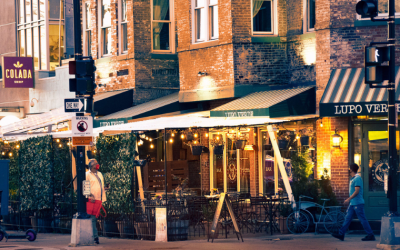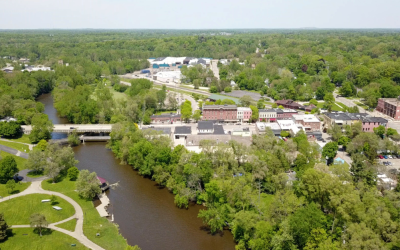By Greg Loh, Chief Policy Officer, City of Syracuse
Equity matters to the City of Syracuse. When I-81 was built in 1959, it tore through the heart of our city, dividing communities, displacing 1,200 families from a predominantly Black neighborhood, and creating a major barrier to opportunity. But now – thanks in part to a landmark $180 million construction grant from the U.S. Department of Transportation’s (USDOT) Neighborhood Access and Equity Program – we are reconnecting our city.
The New York State Department of Transportation broke ground on the I-81 project last summer, preparing to remove the existing viaduct and replace it with a community grid that better uses the network of city streets. This transformation will improve connections to downtown Syracuse, enhance traffic flow, increase safety and equity, and boost economic opportunities across Central New York.
The $180 million construction grant from USDOT is a critical funding piece of this project and will help rebuild parts of the city that have long been overshadowed by I-81. The ambitious project will restore a historically vibrant neighborhood, address systemic inequalities, and serve as a national model for reconnecting cities divided by interstate highways.
How did Syracuse win the grant? The application process was challenging, including completing complex application requirements and competing against over 600 other communities for funding. A $500,000 planning grant from the USDOT Reconnecting Communities Program helped set the stage for our winning application, as did anchoring our approach in partnership and community collaboration. The City of Syracuse worked closely with the New York State Department of Transportation to jointly apply for funding, showing a strong relationship and creative approach to unlocking federal resources.
For our successful planning grant we also built a strong coalition and identified the right team to improve community outcomes and advance a shared vision for the city. Our place-based partners – the Syracuse Housing Authority, the Central New York Regional Transportation Authority, the Syracuse Metropolitan Transportation Council, Blueprint 15, and the SUNY College of Environmental Science and Forestry – contributed ideas to the proposal that reflect the needs of our local communities, ensuring our application keeps our neighbors at the forefront.
Meanwhile, we used data from the U.S. Census and the Metropolitan Planning Organization, along with demographic and socioeconomic data, to understand the project’s potential for improving equity and economic mobility and providing community benefits. In turn, we were able to use that data to develop interventions and plans that are directly linked to residents’ needs, as identified during our research and discovery phase. This granular, data-forward approach allowed us to clearly demonstrate specific provisions in our planning grant application, like how east-west connectivity in our city would directly support economic development and mobility.
We were fortunate to be aided by resources and support from the Local Infrastructure Hub. Members of our project team participated in bootcamps, informational sessions, and webinars throughout the application process, which deepened our understanding of the application process and gathered intel on best practices to make our application competitive. The Hub was a critical partner in shaping an application that stood out amongst the rest and clearly articulated our project’s goals and projected impact.
Syracuse’s success in securing a Reconnecting Communities planning grant and one of the largest construction grants from the Neighborhood Access and Equity Program underscores the city’s commitment to revitalizing its communities and rectifying historical injustices. This achievement is thanks to the tireless efforts of our local and state officials, input from our neighbors, and historic funding from the federal government to revitalize cities around the nation. By prioritizing community needs, leveraging strong partnerships, and presenting compelling, data-driven proposals, cities across the nation can aspire to replicate Syracuse’s success and pave the way for their own transformative projects.






